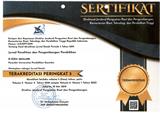Media Pembelajaran Mobuya Untuk Pembelajaran Keragaman Budaya
DOI:
https://doi.org/10.23887/jppp.v4i1.23971Keywords:
Media Pembelajaran, Media Pembelajaran Mobuya, Keragaman Budaya, Indahnya Keragaman Budaya, Pembelajaran TematikAbstract
The purpose of this research is to develop thematic learning media materials the beauty of cultural diversity through learning media development mine own country Mobuya in elementary school. Media development methods in this study is a ADDIE Model (analysis, design, development, implementation, and evaluation). Media developed consists of learning Mobuya media, material cultures in West Kalimantan, and the manual, as for the results of validation include validation of the material retrieved 92.50% with a very worthy category, validation of the syllabus obtained 92, 30% with a very worthy category, validation RPP gained 93, 33% by category is well worth the first learning media validation, retrieved 70, 83% by category are fit enough for the second validation obtained 74, 19% by category is pretty decent. The result of the question form teacher on learning Mobuya learning media on the 22nd of January 2019 obtained results of 88.75% question form the application of learning media use by category is very viable, next on 23 January 2019 results obtained from the implementation of learning by using learning media of 96, 25% by category is very worthy to be used on the learning process in schools thematic basis. Limited trials retrieved retrieved from sngket that results in a spread on the learning process gained 97, 53%. Field trials retrieved pretest results with an average of 54, 70 and post test obtained an average of 68, 4.References
Asist, R., & Sezer, B. (2013). Integrating Technology Into Classroom : The Learner-Centered Instructional Design, (October), 134–144.
Branch, R. M. (2009). Instructional Design: The ADDIE Approach. New York Dordrecht Heidelberg London: Springer. https://doi.org/10.1007/978-0-387-09506-6
D’Astous, A., & Gagnon, K. (2007). An inquiry into the factors that impact on consumer appreciation of a board game. Journal of Consumer Marketing, 24(2), 80–89. https://doi.org/10.1108/07363760710737085
Fitriyawany. (2013). Penggunaan Media Permainan. Jurnal Ilmiah DIDAKTIKA, XIII(2), 223–239.
Halloran, R. O., Deale, C., Halloran, R. O., Ph, D., Deale, C., & Ph, D. (2017). Designing a Game Based on Monopoly as a Learning Tool for Lodging Development Designing a Game Based on Monopoly as a Learning Tool for Lodging Development, 3758(October). https://doi.org/10.1080/10963758.2010.10696983
Hedman, E. (2011). The Frustration of Learning Monopoly : The Emotional Tension of Entering a New Game Encounter. The Ethnographic Praxis in Industry Conference, Boulder, (2001), 18–21.
Latief, M., Kimia, J., & Makassar, U. N. (2017). PENGEMBANGAN PERMAINAN ULAR JARRA SEBAGAI MEDIA, 20, 101–107.
Macdonald, A. (2014). Student demands and a thematic approach to teaching and learning at the University College of Education in Iceland in 1978, 1–19.
Majid, A. (2017). Pembelajaran Tematik Terpadu. Bandung: Remaja Rosdakarya.
Oktavianti, Ika & Ratnasari, Y. (2017). PERMAINAN MONOPOLI ENGKLEK JELAJAH BUDAYA PATI UNTUK PEMBELAJARAN TEMATIK. Pendidikan Bahasa Dan Sastra Indonesia (PBSI) FKIP Universitas Muria Kudus, 63–71.
Park, J. W. (2017). Hybrid Monopoly: A Multimedia Board Game that Supports Bidirectional Communication between a Mobile Device and a Physical Game Set. Multimedia Tools and Applications, 76(16), 17385–17401. https://doi.org/10.1007/s11042-017-4589-x
Retnawati, H., & Munadi, S. (2017). Teachers ’ Difficulties in Implementing Thematic Teaching and Learning in Elementary Schools, (2012). https://doi.org/10.15804/tner.2017.48.2.16
Sugeng. (2018). Mengagumi Budaya Lokal Dari Kabupaten Sanggau Nyeser Prosesi Temiang Taba Mengusir Hantu. Retrieved from http://pontianpost.co.id/ Mengagumi-Budaya-Lokal-Dari-Kabupaten-Sanggau-Nyeser-Prosesi-Temiang-Taba-Mengusir-Hantu
SUHENDRIANTO. (2017). PENGEMBANGAN MEDIA PEMBELAJARAN MONOPOLI TEMATIK UNTUK MENINGKATKAN MOTIVASI BELAJAR Tesis Tesis.
Sukini. (2012). Pembelajaran Tematik di Sekolah Dasar Kelas Rendah dan Pelaksanaannya. Klaten: Universitas Widya Dharma.
Susanto, A. (2014). Pengembangan Pembelajaran IPS di Sekolah Dasar. Jakarta: Kencana.
Utami, S. E. (2015). Strategi Pembelajaran Tematik, 2(November).
Wangid, M. N., Mustadi, A., Erviana, V. Y., & Arifin, S. (2014). Kesiapan guru SD dalam pelaksanaan pembelajaran tematik-integratif pada kurikulum 2013 di DIY. Jurnal Prima Edukasia, 2(2), 175–182. https://doi.org/10.21831/jpe.v2i2.2717
Yong, C. Y., Chew, K. M., Mahmood, N. H., & Ariffin, I. (2014). Image Processing Tools Package in Medical Imaging in MATLAB, (May).
Downloads
Published
How to Cite
Issue
Section
License
Authors who publish with the Jurnal Penelitian dan Pengembangan Pendidikan agree to the following terms:
- Authors retain copyright and grant the journal the right of first publication with the work simultaneously licensed under a Creative Commons Attribution License (CC BY-SA 4.0) that allows others to share the work with an acknowledgment of the work's authorship and initial publication in this journal.
- Authors are able to enter into separate, additional contractual arrangements for the non-exclusive distribution of the journal's published version of the work (e.g., post it to an institutional repository or publish it in a book), with an acknowledgment of its initial publication in this journal.
- Authors are permitted and encouraged to post their work online (e.g., in institutional repositories or on their website) prior to and during the submission process, as it can lead to productive exchanges, as well as earlier and greater citation of published work. (See The Effect of Open Access)







